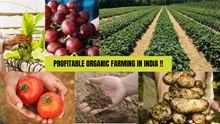
College of Horticulture, Bangalore has invented a new method of making turmeric powder that is more environment-friendly & less cumbersome.
Turmeric powder processing can be time-consuming. Turmeric powder is usually cooked over a span of 25 days. The newly picked crop is cleaned, boiled with firewood, sun-dried for nearly 15-20 days, and polished before being ground into powder.
This process can be reduced to two days without boiling the commodity, and the power generated is of much better quality than that produced by the conventional system.
‘The harvested crop is washed, turned into thin strips, sun-dried for a day or two, and then powdered,’ according to Harish BS, Assistant Professor (Spices and Plantation Crops) at College of Horticulture, who has been working on this method and in farmers' fields.
When asked about the consistency of the powder produced during the process, he claimed that it is a common misconception that turmeric must always be boiled.
He clarified that the challenge is separating moisture from fresh rhizomes, and that the main concern with boiling is that much of the aromatic properties in turmeric are lost during the process.
-
It should be sliced rather than boiled:
After the normal cleaning, the fresh rhizome is sliced (rather than boiling) in this process. The slices should be about 2 mm thick, and they should be dried for 6-8 hours under direct sunlight.
He believes that there is a correlation between slice thickness and drying time, and that the turmeric powder obtained using this process is much superior in terms of the material's overall flavour profile or fragrance.
‘If turmeric is sun-dried for more than 20 days, the ultraviolet component of the sun's rays loses the curcumin in it,’ he added. Curcumin is responsible for turmeric's healing effects.
For him, it isn't just preaching. This slicing process was first prepared by Harish and his students to make turmeric powder.
According to him, about 400-500 kg of turmeric powder has been sold in the last month, suggesting that the students are seeing good returns. Two farmers have purchased slicers and submitted an application for an FSSAI licence to manufacture turmeric powder.
He says that while the current market price for turmeric is about $80 per kg, they will gain up to $300-400 per kg by adding value through the preparation of turmeric powder.
-
Agriculturally friendly: A farmer from Adyanadkavillage in Karnataka, Ashwini Krishnamurthy, said she attempted this form of processing and it took her four days to dry the sliced turmeric. The turmeric's raw scent can also be sensed in the powder.
She proposed that small farmers consider this mode of processing because it saves time and resources. Farmers can save money on turmeric powder production by using this approach because it needs less labour. ‘We can do it with about a fifth of the labour needed in the conventional system,’ she says. When asked whether the powder created by this process of slicing earns premium prices, she replied that consumers might not be interested in such information at this juncture.
-
Cost-Effectiveness: According to Harish, the cost of the slicer is dictated by the power. A slicer that costs between 25,000 and 30,000 dollars slices approximately 200 kg of fresh turmeric per hour, making it affordable to small farmers and small farmer producer organisations(FPOs). It's not that turmeric powder can't be made with new technologies. The thing, he says, is how inexpensive they are. The current technologies accessible from a central research institute are out of scope for the ordinary citizen. The technology costs $75,000 to receive. Aside from that, the consumer would use a very pricey automatic dryer.
‘We can't expect our farmers to waste that much money on turmeric drying. My main aim was to make the tarot cards as plain as possible. Our aim is to offer the best quality unadulterated turmeric to the common man, and to minimise the use of firewood,’ he said, adding, ‘My emphasis was to simplify the technology while still having a superior product.’









